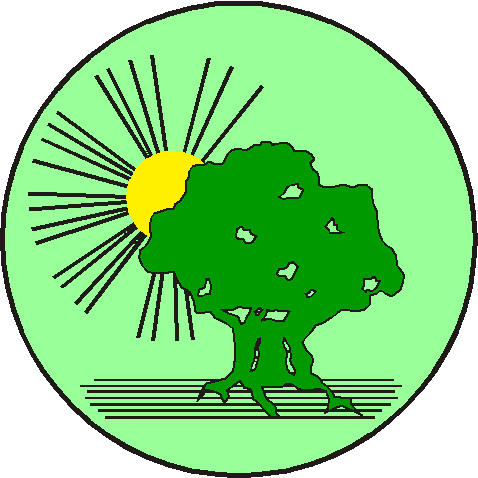Possible Readings for
Q. Personal and Cultural Transformation
Cultural Change
“The Hippies Were Right!” opinion column by Mark Morford, San Francisco Chronicle, May 2, 2007, 5 p.
http://www.commondreams.org/archive/2007/05/02/915
Excerpt: “There is but one conclusion you can draw from the astonishing (albeit fitful, bittersweet) pro-environment sea change now happening in the culture and (reluctantly, nervously) in the halls of power in D.C., one thing we must all acknowledge in our wary, jaded, globally warmed universe: The hippies had it right all along.”
Living Sustainably
Description of Hope, Human and Wild: True Stories of Living Lightly on the Earth by Bill McKibben, Hungry Mind Press, 1995, 1 sp.
http://www.amazon.com/gp/product/1886913137/102-1045981-3392120?v=glance&n=283155&v=glance
One-sentence description.
Review by Tom Collins of Hope, Human and Wild: True Stories of Living Lightly on the Earth by Bill McKibben, 2000, 4 sp.
http://www.rsiss.net/ecology/hopehuman.html
One-sentence description.
Review by Phyllis Ehrenfeld of Hope, Human and Wild: True Stories of Living Lightly on the Earth by Bill McKibben, 3 sp.
http://www.ethicalculture.org/review/articles/hope.html Missing.
One-sentence description.
“Checking in with Bill McKibben,” an interview of Bill McKibben by Jay Walljasper, Conscious Choice, July 1999, 3 sp.
http://www.consciouschoice.com/1999/cc1207/citizen1207.html Missing.
One-sentence description.
Inner Healing
“Closed Hearts, Closed Minds,” by Michael Lerner, Tikkun, September/October 2003
http://www.tikkun.org/archive/backissues/xtik0309/editorials/030903a.html
One-sentence description.
“Core Principles of Tikkun,” Tikkun, 4 p.
http://www.tikkun.org/campus_network/core_principles
One-sentence description.
Thich Nhat Hanh’s Mindfulness
“About Thich Nhat Hanh”
“Thay’s 14 Precepts,” by Thich Nhat Hanh
http://www.seaox.com/thich.html (bottom of page)
or
http://www.religionfacts.com/buddhism/sects/engaged_buddhism.htm
One-sentence description.
“The Five Mindfulness Trainings,” by Thich Nhat Hanh
http://www.plumvillage.org/HTML/practice/html/5_mindfulness_trainings.htm Missing.
or
http://dharma.ncf.ca/introduction/precepts.html
or
http://www.mindfulnessmeditationcentre.org/5trainings.htm
or
One-sentence description.
“Man is Not Our Enemy,” by Thich Nhat Hanh (only 1st three paragraphs and last two paragraphs)
http://www.plumvillage.org/Vietnam/man_is_not_our_enemy.htm Missing.
Leadership
“A Brief History of Leadership,” pre-book advertising for Kick It In: Developing the Self-Motivation to Take the Lead, 2002, 8 p.
http://www.kickitin.com/pdfs/1591990106_web_preview.pdf#page=1 Read pages 2-9 only.
One-sentence description.
“The Social Change Model of Leadership Development,” Central Michigan University Leadership Camp, 5 p.
http://www.cmich.edu/Residence_Life/Leadership_Opportunities/Leadership_Camp/Social_Change.htm
The social change leadership model is designed to enhance the development of leadership qualities in all participants — those who hold formal leadership positions as well as those who do not — and to promote a process that is inclusive and actively engages all who wish to contribute.
“The 7 Values of the Social Change Model of Leadership Development,” Frostburg State University Student and Community Involvement Leadership Programs, 1 p.
http://involvement.frostburg.edu/olce/socialchange.html
or “Social Change Model,” University of Louisville Campus Life Leadership, 1 p.
http://campuslife.louisville.edu/leadership/social-change-model Missing.
or “Quick Tips on The Social Change Model of Leadership Development,” Buffalo State University Student Life Office, 2 p.
http://www.buffalostate.edu/studentlife/documents/SOCIACG.pdf
More on the social change leadership model.
Excerpt from Exploring Leadership: For College Students Who Want to Make a Difference by Susan R. Komives, et al., March 1998, 6 p.
http://www.amazon.com/gp/reader/0787909297/ref=sib_dp_bod_ex/103-6572354-2931011?ie=UTF8&p=S00M#reader-link Read pages 1-6.
One-sentence description.
Cultural Transformation
“The Partnership Organization: A Systems Approach,” by Riane Eisler and Alfonso Montuori, OD Practitioner, Volume 33, Number 2, 2001, 16 p.
Much that is today being advocated in the organizational development field is a move toward an overarching partnership model consisting of (1) flatter, less rigid hierarchical organizations, (2) managers seen as supportive facilitators, (3) an orientation of “power to/with,” (4) teamwork, (5) diversity, (6) gender balance, and (7) a focus on creativity and entrepreneurship.
 START
START 
